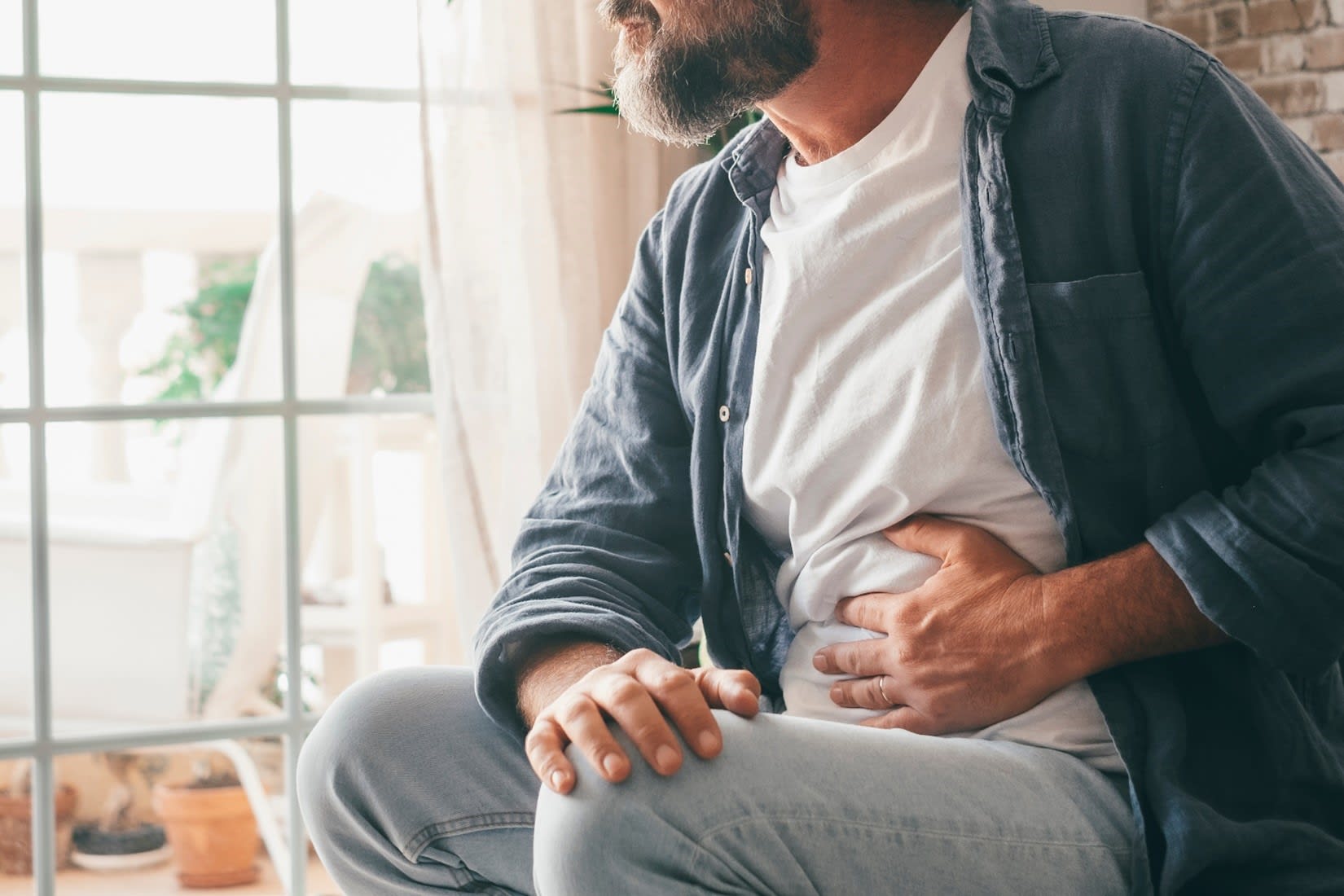Understanding gastroparesis and the connection to cancer

In this article:
- Gastroparesis refers to the delayed emptying of the stomach because either the muscles or nerves (or both) aren’t working right.
- Gastroparesis does not cause cancer, but it can complicate the management of cancer, particularly in patients undergoing chemotherapy.
- There is no cure for gastroparesis, but you can often manage your symptoms and maintain a good quality of life through careful management of your diet (monitoring what and how often you eat).
What is gastroparesis?
Gastroparesis interferes with the muscle and/or nerve activity that moves food through your stomach and into your small intestine. “Gastroparesis is when your stomach does not work correctly, and it takes longer for food to move through your stomach. The symptoms can vary— some people might have only mild symptoms, while others can be quite debilitating,” says Katherine Moreno, M.D., a general surgeon with Providence Medical Group in Everett, Wash.
This means that the stomach takes longer than normal to empty its contents into the small intestine. Researchers don’t know all the causes of gastroparesis, but they do know that it’s common in people with diabetes — about one-third of gastroparesis cases are people with diabetes — and it can complicate cancer care. It can also sometimes occur after certain surgical procedures, but up to half of gastroparesis cases are idiopathic, which means the exact cause is unknown.
Gastroparesis and cancer
Gastroparesis does not cause cancer, but it can complicate the management of cancer, particularly in patients undergoing chemotherapy. Certain cancer treatments can affect the nerves and muscles that help your stomach work properly, leading to gastroparesis. After a cancer diagnosis, gastroparesis symptoms are often attributed to chemotherapy-induced nausea and vomiting. Additionally, this condition can be worsened by cancer-related weight loss and muscle loss, known as cachexia.
Gastroparesis can hinder cancer treatment by making it hard for patients to stay properly nourished and hydrated, resulting in further weight loss, malnutrition, and reduced tolerance to treatments.
“I recommend seeing a nutritionist if you have gastroparesis. They can offer help diet modifications needed to manage care and minimize discomfort. Although there are a few surgical options, these are very rarely performed,” says Dr. Moreno.
Gastroparesis symptoms
|
Gastroparesis symptoms The most common symptoms of gastroparesis include: |
Symptoms of Gastroparesis in Cancer Patients Symptoms can be mistaken for chemotherapy-induced nausea and vomiting or cancer cachexia. |
|
|
Diagnosing gastroparesis
The gold standard for diagnosis of gastroparesis is a gastric emptying study. During this test, your doctor will ask you to eat a light meal (such as eggs and toast) that contains a small amount of radioactive material. A technician will place a scanner over your abdomen to monitor how fast the food is leaving your stomach. If the food is moving into your small intestine at a slower rate than normal, your doctor will be able to make a gastroparesis diagnosis.
Treatment Options
Managing gastroparesis in cancer patients requires a multifaceted approach, including, but not limited to, the following:
Medications
- Prokinetic agent medications can help stimulate stomach muscle contractions.
- Anti-nausea medications may also be beneficial.
Dietary Modifications
- Eating six to seven small, low-fat, low-fiber meals a day can ease symptoms.
- Liquid nutritional supplements can be useful for those who struggle with solid foods.
Surgical Interventions
- Gastric drainage surgery: Cutting the pyloric muscle can help food pass more easily from the stomach.
- In severe cases, a feeding tube may be placed to ensure proper nutrition.
- Gastric pacemaker placement: The device is surgically implanted under the skin and connected to two electrodes placed on the stomach wall to help stimulate the stomach nerves. Studies have shown it works best for patients with diabetes.
Alternative Therapies
- Acupuncture has shown some promise in reducing gastroparesis symptoms, although further studies are necessary.
Managing life with gastroparesis
Gastroparesis is a challenging condition that can have many different levels of severity, and symptoms will come and go and/or wax and wane in intensity.
Dr. Moreno recognizes the potential frustration patients face dealing with the challenges of gastroparesis, especially during cancer treatment. “I suspect it is much more common than we realize because the symptoms are variable and nonspecific, so we attribute them to other factors. But once it's recognized, it can usually be successfully managed with appropriate diet changes and medications.”
Early recognition and a comprehensive treatment plan are essential for improving quality of life and treatment outcomes. If you think you might have gastroparesis, you can find the help you need at the Providence Digestive Health Institute.
_________________________________________________
Find a doctor
If you are looking for a Providence gastroenterologist, you can search for one in our provider directory.
Download the Providence app
It’s all in the app: easily stay connected with Providence and your health. With the Providence app, you can schedule appointments, have virtual visits from the comfort of your own home, get health recommendations personalized for you, access your health records and so much more. Learn more and download the app.
Related resources
When to see your doctor about lower abdominal pain
You don’t have to live with chronic acid reflux
The mind-gut connection and how to improve it
This information is not intended as a substitute for professional medical care. Always follow your health care professional’s instructions.


